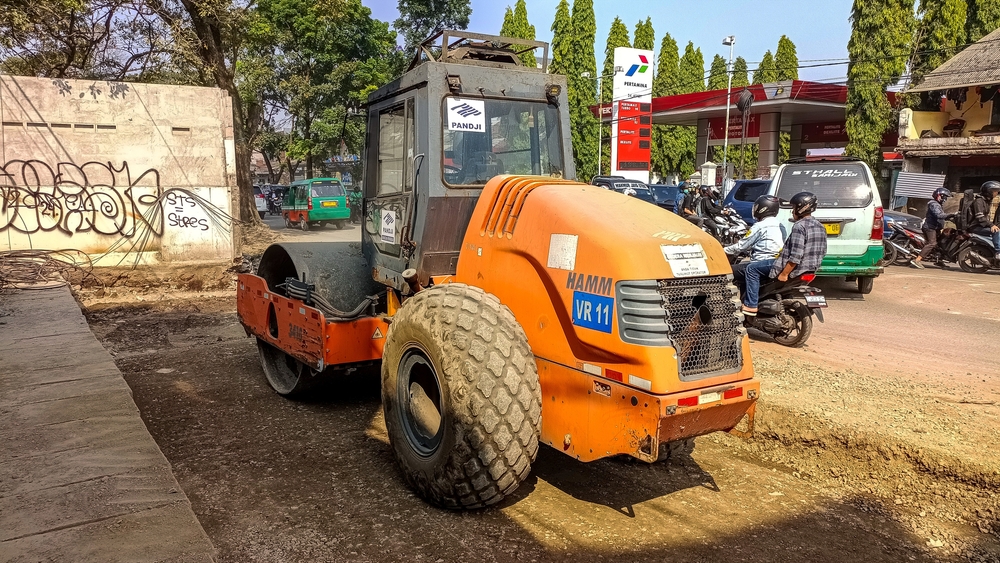Determining how much a backhoe costs is a crucial step for construction industry professionals, business owners, procurement specialists, and contractors when deciding whether to purchase or rent this essential equipment.
This cost assessment influences not only the immediate financial outlay but also the long-term financial and strategic planning required to optimize equipment utilization effectively.
The Price Tag of Ownership
Owning a backhoe is a significant financial commitment, starting with a substantial upfront cost.
The initial purchase price for a new backhoe typically ranges from $50,000 to $100,000, varying based on the brand, model, and specific features required for your projects. This upfront investment, however, represents only a portion of the total ownership cost.
Additional financial responsibilities include:
1. Maintenance and Repairs
Effective maintenance is essential to ensure the longevity and optimal performance of a backhoe. Annual costs for routine maintenance, which can include oil changes, hydraulic system checks, and replacement of worn parts, can easily run into several thousand dollars.
Unexpected repairs due to mechanical failures or wear and tear can significantly increase these costs, necessitating a dedicated budget line item to manage these expenses.
2. Insurance
Insurance is another critical ongoing cost. Premiums depend on several factors, including the equipment’s value, the risk associated with its operation, and the geographic location where it is used. Insurance costs can vary widely but are typically a few thousand dollars annually, designed to cover damages, theft, and liability for accidents.
3. Depreciation
Like any significant investment in machinery, a backhoe depreciates over time. The rate of depreciation can be steep, approximately 20-40% in the first year alone.
This depreciation impacts the asset’s book value and must be carefully considered in financial projections and tax calculations.
4. Resale Value
The potential to recoup a portion of the initial investment through resale is an important aspect of the total cost of ownership. The resale value of a backhoe depends heavily on its condition and market demand at the time of sale.
Well-maintained equipment in a buoyant market can retain a substantial portion of its value, providing a return on the initial investment.
The Rental Route
Renting a backhoe offers a level of flexibility that purchasing outright may not, particularly for businesses facing fluctuating project demands or those managing budget constraints.
The decision to rent can often lead to cost savings in the short term and allows firms to adapt quickly to project needs without the long-term financial commitment of ownership. The cost of renting a backhoe is influenced by several factors:
1. Rental Period
Rental companies typically offer backhoes on a daily, weekly, or monthly basis. Longer rental periods often attract lower daily rates, providing cost advantages for extended projects.
For instance, while a daily rental might cost $300 per day, weekly rates could drop to around $900 per week, effectively offering a day free for each week rented.
2. Model and Age
The rental price is also dependent on the model and age of the equipment. Newer models featuring the latest technology or specialized equipment designed for specific tasks, such as those with advanced hydraulic capabilities, tend to be more expensive than older or more basic models.
Choosing the right model to match the job requirements is crucial in optimizing rental expenditure.
3. Location and Availability
Geographic location can significantly affect rental prices due to differing demand and availability.
In areas with numerous construction projects, prices might be higher due to increased demand, while remote locations might incur additional transport costs.
Additional costs associated with renting include:
4. Transport and Setup
The logistics of getting a backhoe to the site can add significantly to the cost. Delivery charges are common and vary depending on the distance from the rental facility to the project site. Setup fees may also apply, especially for more complex equipment.
5. Operational Fees
Some rental agreements include additional charges that cover operational wear and tear or excess usage, which can accumulate quickly on intensive projects.
Breakdown of Buying vs. Renting
Deciding between buying and renting a backhoe requires a thorough comparative analysis of the cost implications over time based on different usage scenarios.
This analysis helps in understanding which option is more economically viable in the long run:
Short-term Projects
For projects that are short in duration or occur infrequently, renting a backhoe can often be the more cost-effective choice. This approach avoids the large upfront investment and the depreciation costs associated with buying new equipment.
Renting also eliminates the need for long-term storage and ongoing maintenance expenses, making it ideal for one-off projects or occasional needs.
Break-even Analysis
This financial calculation determines at what point the total cost of renting a backhoe equals the purchase and ownership costs. This analysis considers various factors such as the frequency of use, average rental rates, maintenance costs, insurance, and depreciation of the equipment.
Identifying the break-even point helps businesses decide when it becomes more cost-effective to buy rather than continue renting.
Visual aids like charts and graphs are invaluable in this analysis, as they provide a clear visual representation of cost comparisons over time.
These aids can illustrate how initial higher investments in purchasing may eventually lead to savings compared to ongoing rental costs, supporting a more informed decision-making process.
Key Factors Influencing the Decision
The decision to buy or rent a backhoe is influenced by several operational and strategic factors that vary depending on the specific circumstances of a project or business:
1. Project Scale and Duration
Larger or longer-term projects may benefit more from owning a backhoe. The per-day cost of ownership decreases over time, which can make purchasing more economical for extended projects or when the equipment is used almost continuously.
2. Frequency of Use
For businesses that need a backhoe infrequently, renting is often more practical. It avoids the fixed costs of ownership such as insurance, storage, and maintenance, which can accumulate significantly when the equipment is seldom used.
3. Equipment Availability
Immediate or seasonal project demands may necessitate the flexibility that renting offers. Rental companies typically provide a range of models that can be available at short notice, whereas purchasing the right model might involve delays.
4. Logistical Considerations
Owning a backhoe requires dealing with logistics such as storage, transportation, and maintenance, which can add to the overall costs and complexity. For companies lacking the infrastructure to manage these logistics efficiently, renting might prove to be a better option.
Each of these factors must be carefully considered in the context of the specific needs and constraints of a project or business.
Conclusion: Guided Decision-Making
Deciding whether to buy or rent a backhoe requires a careful alignment of financial capabilities with project needs. This decision is not just about cost-efficiency but also about strategic asset management.
Construction companies must consider how this choice affects their ability to respond to project opportunities and challenges. Each investment in equipment like a backhoe should be viewed as part of a broader strategy aimed at enhancing operational flexibility and capability.
Therefore, the guidance provided here aims to not only optimize equipment utilization but also to ensure that every decision contributes positively to the company’s overall operational objectives and long-term success.









